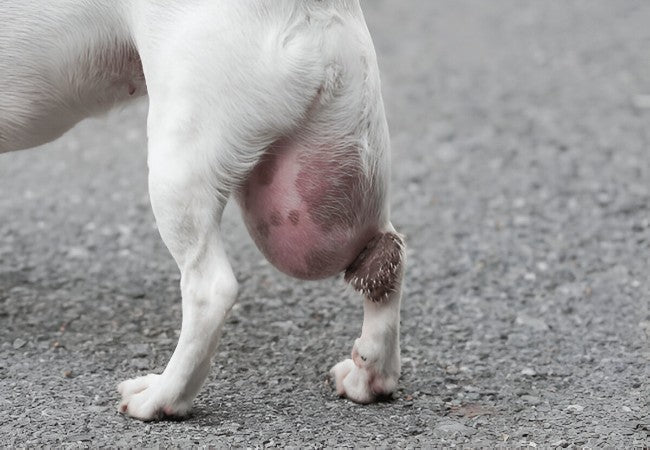Hemangiopericytoma in Dogs: A 2025 Vet-Approved Guide to Symptoms, Diagnosis & Treatment🐾🩺

In this article
Hemangiopericytoma in Dogs: A 2025 Vet-Approved Guide to Symptoms, Diagnosis & Treatment🐾🩺
By Dr. Duncan Houston BVSc
Hemangiopericytoma is a rare type of soft tissue sarcoma in dogs, originating from pericytes—cells that wrap around the blood vessels. While these tumors are generally slow-growing and localized, their tendency to recur after surgical removal makes them a unique challenge in veterinary oncology.
🧬 What is Hemangiopericytoma?
Hemangiopericytoma arises from pericytes, which are connective tissue cells surrounding capillaries. These tumors typically develop in the subcutaneous tissues and are most commonly found on the limbs, but can also appear on the trunk or other areas.
Although classified as malignant due to their invasive nature, hemangiopericytomas rarely metastasize to distant organs. However, they can infiltrate surrounding tissues, making complete surgical removal challenging and increasing the risk of recurrence.
⚠️ Symptoms and Clinical Signs
Early detection is crucial. Watch for the following signs:
- Slow-growing mass: A firm, solitary lump under the skin, often on a limb.
- Ulceration: The mass may become ulcerated or bleed.
- Changes in skin appearance: The area over the tumor may appear bald or have a different pigmentation.
- Lameness or discomfort: If the tumor affects mobility or causes pain.
Regularly check your dog for any new lumps or changes in existing ones, and consult your veterinarian if you notice anything unusual.
🩺 Diagnosis
Diagnosing hemangiopericytoma involves several steps:
- Physical examination: Assessing the size, location, and characteristics of the mass.
- Fine needle aspiration (FNA): Collecting cells from the mass for cytological analysis.
- Biopsy: Obtaining a tissue sample for histopathological examination to confirm the diagnosis.
- Imaging: X-rays, ultrasound, or MRI to evaluate the extent of the tumor and check for metastasis.
Accurate diagnosis is essential for determining the appropriate treatment plan.
💊 Treatment Options
Treatment strategies depend on the tumor's size, location, and grade:
- Surgical excision: The primary treatment involves removing the tumor with wide margins to minimize recurrence risk.
- Radiation therapy: Recommended if complete surgical removal isn't possible or to address residual tumor cells.
- Chemotherapy: May be considered in cases of high-grade tumors or when surgery and radiation aren't feasible.
- Amputation: In cases where the tumor is located on a limb and cannot be removed entirely, amputation may be the best option.
Early intervention improves the prognosis and reduces the likelihood of recurrence.
📈 Prognosis
The prognosis for dogs with hemangiopericytoma varies:
- Low-grade tumors: With complete surgical removal, the prognosis is generally favorable.
- High-grade tumors: These have a higher risk of recurrence and may require additional treatments.
- Incomplete excision: Increases the chance of the tumor returning, often more aggressively.
Regular follow-up appointments are essential to monitor for recurrence and manage any complications promptly.
🛡️ Preventive Measures
While specific prevention for hemangiopericytoma isn't established, general health maintenance can help:
- Regular veterinary check-ups: Early detection through routine exams.
- Healthy lifestyle: Balanced diet and regular exercise to support overall well-being.
- Prompt attention to lumps: Early evaluation of any new or changing masses.
📱 Support and Resources
For additional support and information:
- Ask A Vet: Access professional veterinary advice through the Ask A Vet platform.
- Download the Ask A Vet App: For quick access to veterinary support, download the Ask A Vet app.
Early diagnosis and appropriate treatment can significantly improve your dog's quality of life.
🐾 For more expert advice and pet care tips, visit AskAVet.com.






